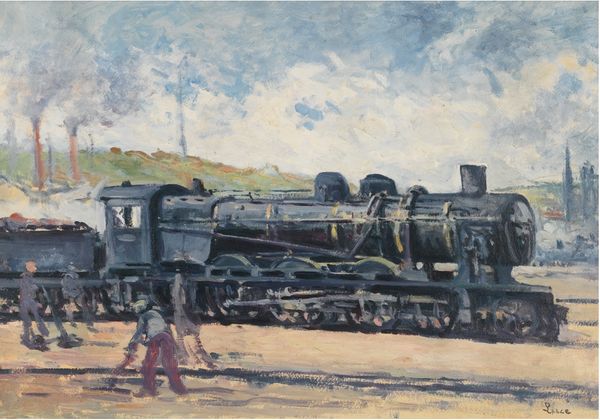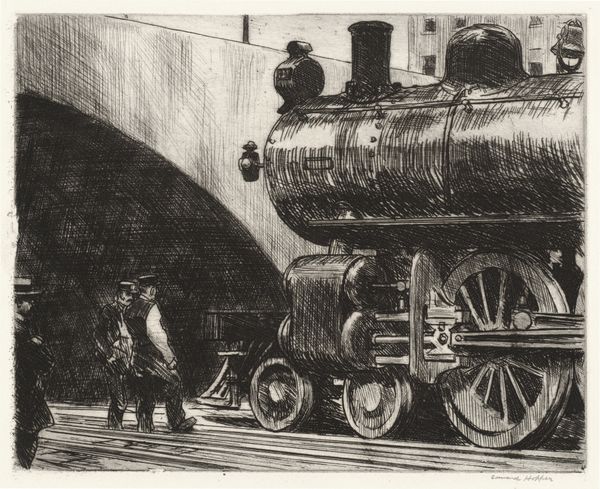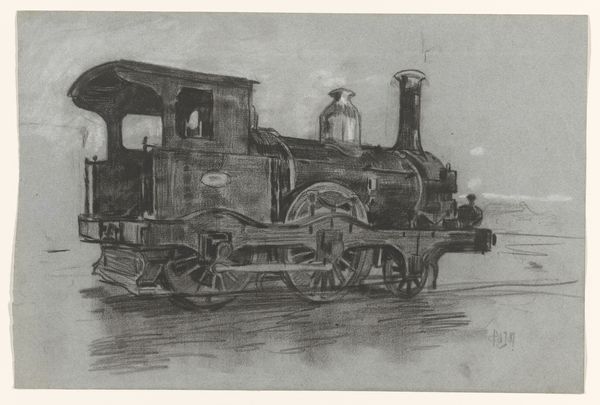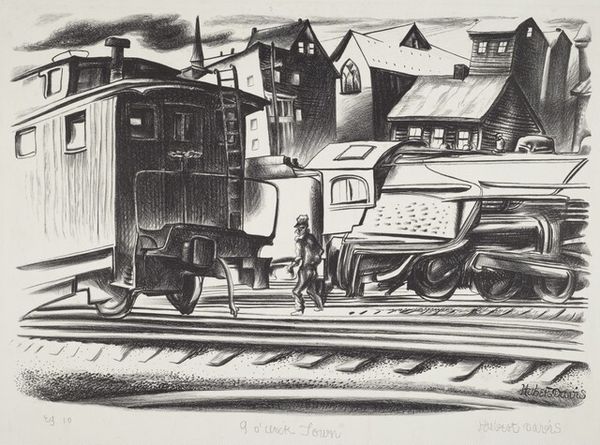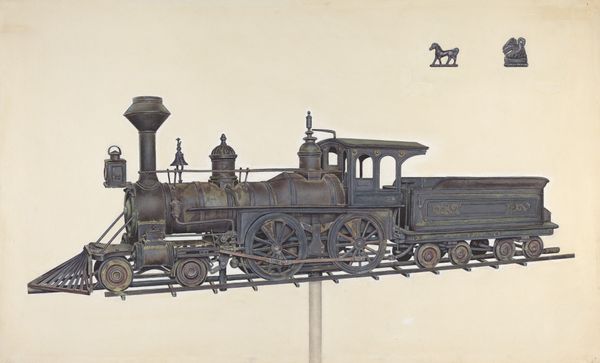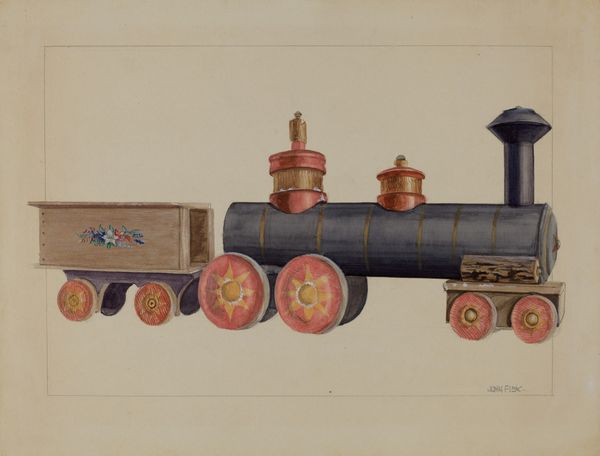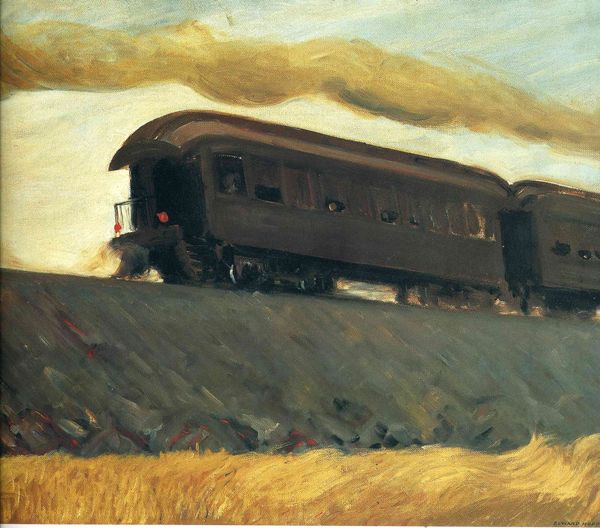
Dimensions: sheet: 35.56 × 50.8 cm (14 × 20 in.)
Copyright: National Gallery of Art: CC0 1.0
Editor: This is Reginald Marsh’s “Locomotive,” created in 1932 using watercolor and drawing. It's incredible how much detail he gets with watercolors; the composition is quite striking with the train dominating the scene. What do you see in this piece? Curator: The structure of the piece hinges on its masterful exploitation of tonal range. Marsh utilizes the transparency of watercolor to create layered densities of pigment, giving the impression of mass and volume within an industrial subject. Editor: It’s almost like he’s making something usually very harsh feel a bit…softer? Curator: Precisely. Note how the blurred edges soften the rigid geometry of the train, creating a visual interplay between form and atmospheric effect. Semiotically, this could also imply an undercurrent of pre-war industrial uncertainty. Do you find any symbolism through the arrangement of shapes and textures? Editor: I didn’t think about it that way, but I can see how the train, usually a symbol of forward movement, appears almost static. It is caught, as it were, between the medium, a transparent watercolor, and subject: raw iron. Curator: Indeed. It seems we have deciphered, if only briefly, the symbolic structure Marsh carefully assembled. Editor: I will definitely pay closer attention to not just *what* is painted but *how* the painting is constructed. Thank you! Curator: And I was reminded of the evocative power latent within formalism's close looking.
Comments
No comments
Be the first to comment and join the conversation on the ultimate creative platform.
